Opera buffa is a genre of opera. It was first used as an informal description of Italian comic operas variously classified by their authors as commedia in musica, commedia per musica, dramma bernesco, dramma comico, divertimento giocoso.

Daniel-François-Esprit Auber was a French composer and director of the Paris Conservatoire.

Luigi Cherubini was an Italian Classical and Romantic composer. His most significant compositions are operas and sacred music. Beethoven regarded Cherubini as the greatest of his contemporaries. His operas were heavily praised and interpreted by Rossini.

Étienne Nicolas Méhul was a French composer, "the most important opera composer in France during the Revolution". He was also the first composer to be called a "Romantic". He is known particularly for his operas, written in keeping with the reforms introduced by Christoph Willibald Gluck.
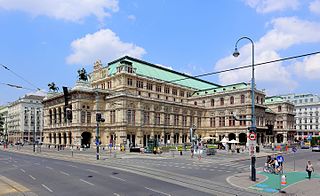
Opera in German is that of the German-speaking countries, which include Germany, Austria, and the historic German states that pre-date those countries.

Grand opera is a genre of 19th-century opera generally in four or five acts, characterized by large-scale casts and orchestras, and lavish and spectacular design and stage effects, normally with plots based on or around dramatic historic events. The term is particularly applied to certain productions of the Paris Opéra from the late 1820s to around 1850; 'grand opéra' has sometimes been used to denote the Paris Opéra itself.
Opéra comique is a genre of French opera that contains spoken dialogue and arias. It emerged from the popular opéras comiques en vaudevilles of the Fair Theatres of St Germain and St Laurent, which combined existing popular tunes with spoken sections. Associated with the Paris theatre of the same name, opéra comique is not necessarily comical or shallow in nature; Carmen, perhaps the most famous opéra comique, is a tragedy.

François-Adrien Boieldieu was a French composer, mainly of operas, often called "the French Mozart".

Les deux journées, ou Le porteur d'eau is an opera in three acts by Luigi Cherubini with a libretto by Jean-Nicolas Bouilly. It takes the form of an opéra comique, meaning not that the subject matter is humorous, but that the piece is a mixture of spoken dialogue and musical numbers. Bouilly claimed he took the story from a real-life incident during the French Revolution but, for fear of censorship, he moved the action back to 1647 and the time of Cardinal Mazarin. The opera was first performed on 16 January 1800 at the Théâtre Feydeau in Paris.

Ariodant is an opéra comique in three acts by the French composer Étienne Méhul first performed at the Théâtre Favart in Paris on 11 October 1799. The libretto, by François-Benoît Hoffman is based on the same episode in Ariosto's Orlando Furioso that also inspired Handel's opera Ariodante. The work had a profound influence on the development of Romantic opera, particularly in Germany.

French opera is one of Europe's most important operatic traditions, containing works by composers of the stature of Rameau, Berlioz, Gounod, Bizet, Massenet, Debussy, Ravel, Poulenc and Messiaen. Many foreign-born composers have played a part in the French tradition as well, including Lully, Gluck, Salieri, Cherubini, Spontini, Meyerbeer, Rossini, Donizetti, Verdi and Offenbach.
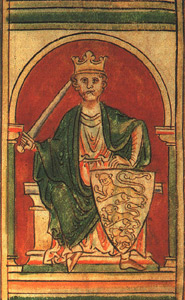
Richard Cœur-de-lion is an opéra comique, described as a comédie mise en musique, by the Belgian composer André Grétry. The French text was by Michel-Jean Sedaine. The work is generally recognised as Grétry's masterpiece and one of the most important French opéras comiques. It is based on a legend about King Richard I of England's captivity in Austria and his rescue by the troubadour Blondel de Nesle.
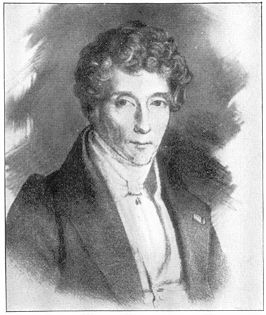
Lodoïska is an opera by Luigi Cherubini to a French libretto by Claude-François Fillette-Loraux after an episode from Jean-Baptiste Louvet de Couvrai’s novel, Les amours du chevalier de Faublas. It takes the form of a comédie héroïque in three acts, and was a founding work of rescue opera. It has also been called one of the first Romantic operas, though Cherubini's work was basically classical.

Pierre Gaveaux was a French operatic tenor and composer, notable for creating the role of Jason in Cherubini's Médée and for composing Léonore, ou L’amour conjugal, the first operatic version of the story that later found fame as Fidelio.

The Théâtre Feydeau, a former Parisian theatre company, was founded in 1789 with the patronage of Monsieur, Comte de Provence, and was therefore initially named the Théâtre de Monsieur. It began performing in the Salle des Tuileries, located in the north wing of the Tuileries Palace, then moved to the Salle des Variétés at the Foire Saint-Germain, and finally, beginning in 1791, settled into its own custom-built theatre, the Salle Feydeau located on the rue Feydeau. The company was renamed Feydeau after the royal family was arrested during the French Revolution.
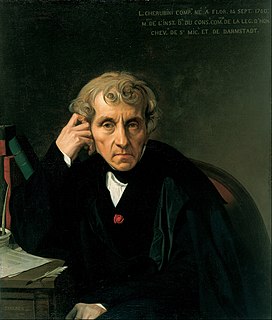
Eliza, ou Le voyage aux glaciers du Mont St Bernard is an opéra comique in two acts by Luigi Cherubini with a French libretto by Jacques-Antoine de Révéroni Saint-Cyr. It was first performed at the Théâtre Feydeau, Paris on 13 December 1794.

Faniska is an opéra comique in three acts by Luigi Cherubini. The German libretto, by Joseph Sonnleithner, is based on the melodrama Les mines de Pologne (1803) by René-Charles Guilbert de Pixérécourt.

Le congrès des rois was a 3-act French Revolutionary opera of the genre comédie mêlée d'ariettes with a libretto by De Maillot, a stage name used by Antoine-François Ève early in his career, and music by a collaborative of twelve composers. It was a satire directed against the "enemies of France". The libretto and most of the music has been lost. The composition of the opera was ordered by the Comité du Salut public to be completed in two days. The opera was first performed on 26 February 1794 [8 vent II] by the Opéra-Comique in the first Salle Favart and was presented a total of 2 times. At the premiere, "the length of the work and its couplets' lack of charm tired the audience, which took out its bad feelings on the ballet. Sharp whistles grew louder still, and the authors were not acknowledged." When the second performance met a similar reception, the management ended its run.

Euphrosine, ou Le tyran corrigé is an opera, designated as a 'comédie mise en musique', by the French composer Étienne Nicolas Méhul with a libretto by François-Benoît Hoffman. It was the first of Méhul's operas to be performed, and established his reputation as a leading composer of his time. The premiere was given by the Comédie-Italienne at the first Salle Favart in Paris on 4 September 1790.
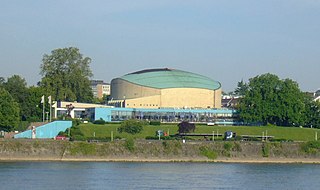
The Beethovenfest is a festival of classical music in Bonn, Germany, dedicated mostly to the music of Ludwig van Beethoven who was born there. It dates back to 1845, when the composer's 75th anniversary of birth was celebrated with unveiling his monument and performing major works.

















